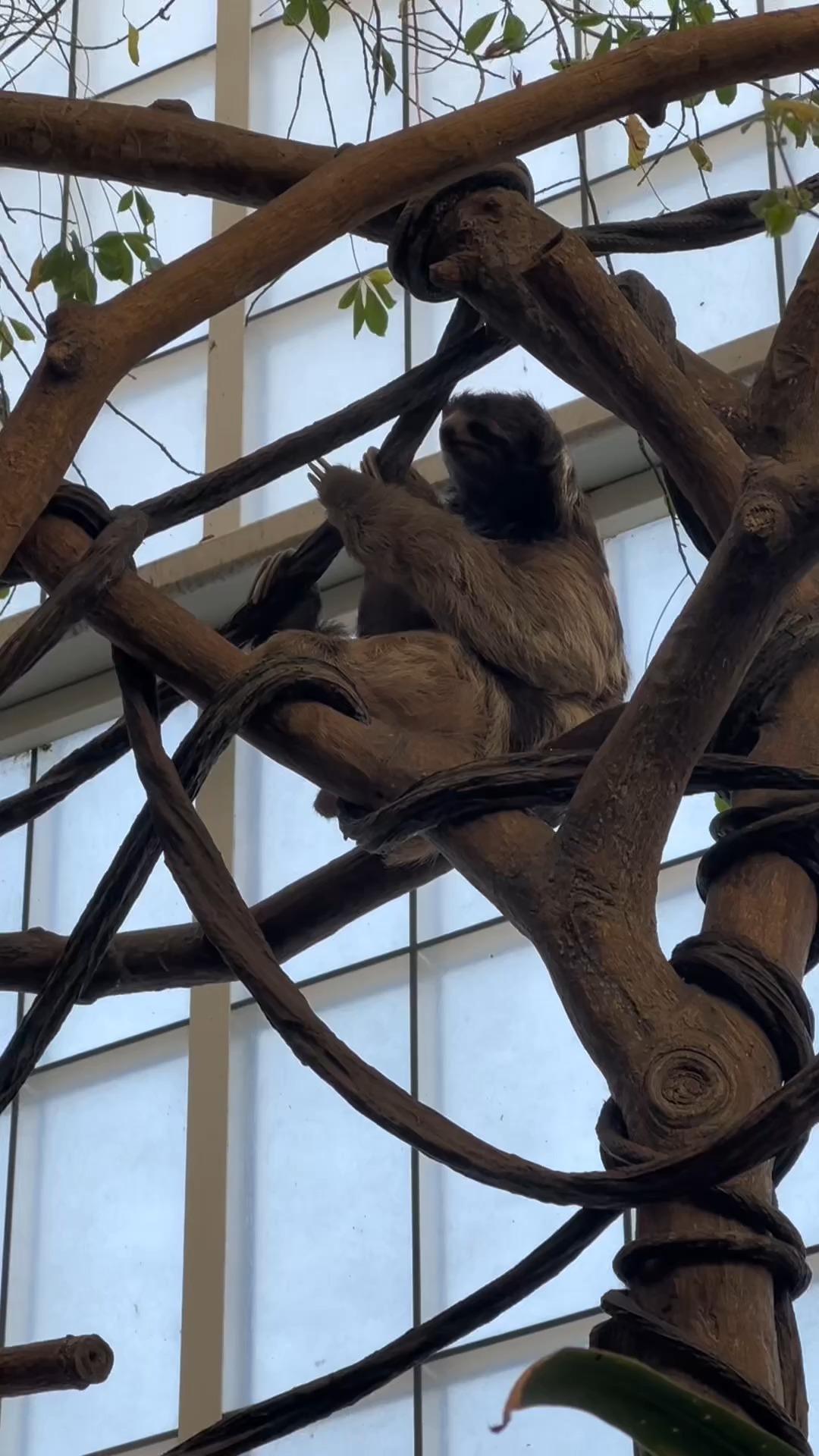- The lifestyle and habitat of sloths at DWA: focusing on creating a perfect low-stress environment.
- The specialized diet that supports the health and well-being of sloths.
- The freedom and autonomy sloths have in deciding their daily activities within their environment.
- The role of zoo management and wildlife conservation in creating a suitable habitat for sloths.
- The broader implications of conservation efforts and education in preserving sloth populations.
Life for sloths at the Dallas World Aquarium (DWA) is unlike any seen in the hustle and bustle of urban environments. In this curated setting, sloths enjoy a life devoid of excessive stress, crafted meticulously to cater to their natural rhythms and needs. Sloths are slow-paced creatures, spending most of their time in a state of rest or slow movement, which is perfectly replicated at DWA. This low-stress habitat is critical to their well-being, as it allows them to engage in natural behaviors without disturbance.
One of the primary components of maintaining such an environment for the sloths is their diet. Sloths are herbivores, and their diet includes a mix of leaves, fruits, and vegetables. At DWA, they are provided with a diet that mirrors what they would consume in the wild. This careful selection of food is not only about nutrition; it also enriches their habitat by encouraging natural foraging behaviors. This specialized diet helps maintain a balanced digestive system, crucial for an animal with a slower metabolism.
Autonomy in their lifestyle is another key aspect of how sloths thrive at DWA. Unlike many animals that have to adhere to strict schedules in managed environments, sloths at DWA have the liberty to choose how they spend their day. They are free to explore their habitat, engage with elements like climbing structures, or rest in their cozy spaces whenever they prefer. This level of freedom is pivotal for their physical and psychological health, allowing them to act predominantly on instinct rather than external cues.
Zoo management plays a significant role in establishing and maintaining an appropriate setting for sloths. The team at DWA incorporates principles of wildlife conservation and environmental stewardship to enhance the lives of the animals under their care. This includes not only creating the right physical environment but also monitoring the health and behavior of the sloths to identify and address any issues promptly. By prioritizing the needs of the animals, zoo managers can foster an environment that supports natural behavior and longevity.
Sloths at DWA are more than just exhibits; they are ambassadors for wildlife conservation. Educating visitors about the natural habitat and behaviors of sloths creates awareness and fosters a connection between people and wildlife. This understanding is essential for broader conservation efforts, as it inspires individuals to engage with issues affecting wildlife and to support conservation initiatives. By observing sloths in such a well-maintained environment, visitors can appreciate the complexity of their needs and the importance of conserving their natural habitats in the wild.
In conclusion, Life in the slow lane at DWA is an exemplar of how zoos can create environments that cater to the intricate needs of their inhabitants. From a well-structured diet to autonomy in daily activities, every aspect of the sloths’ life is designed to mimic their natural state as closely as possible. This approach not only supports the health and wellness of the sloths but also serves as an educational tool to engage and inform the public about wildlife conservation. Through continued efforts in responsible zoo management and conservation education, sloths and other wildlife species can thrive both in managed environments and in the wild.
*****
Source Description
Life in the slow lane 🦥✨ At DWA, our sloths enjoy a low-stress environment perfectly tailored to their needs. 🥬🍎 With a specialized diet and the freedom to decide when it’s time to head back to their cozy habitats, they live life exactly how they like it. 💚


